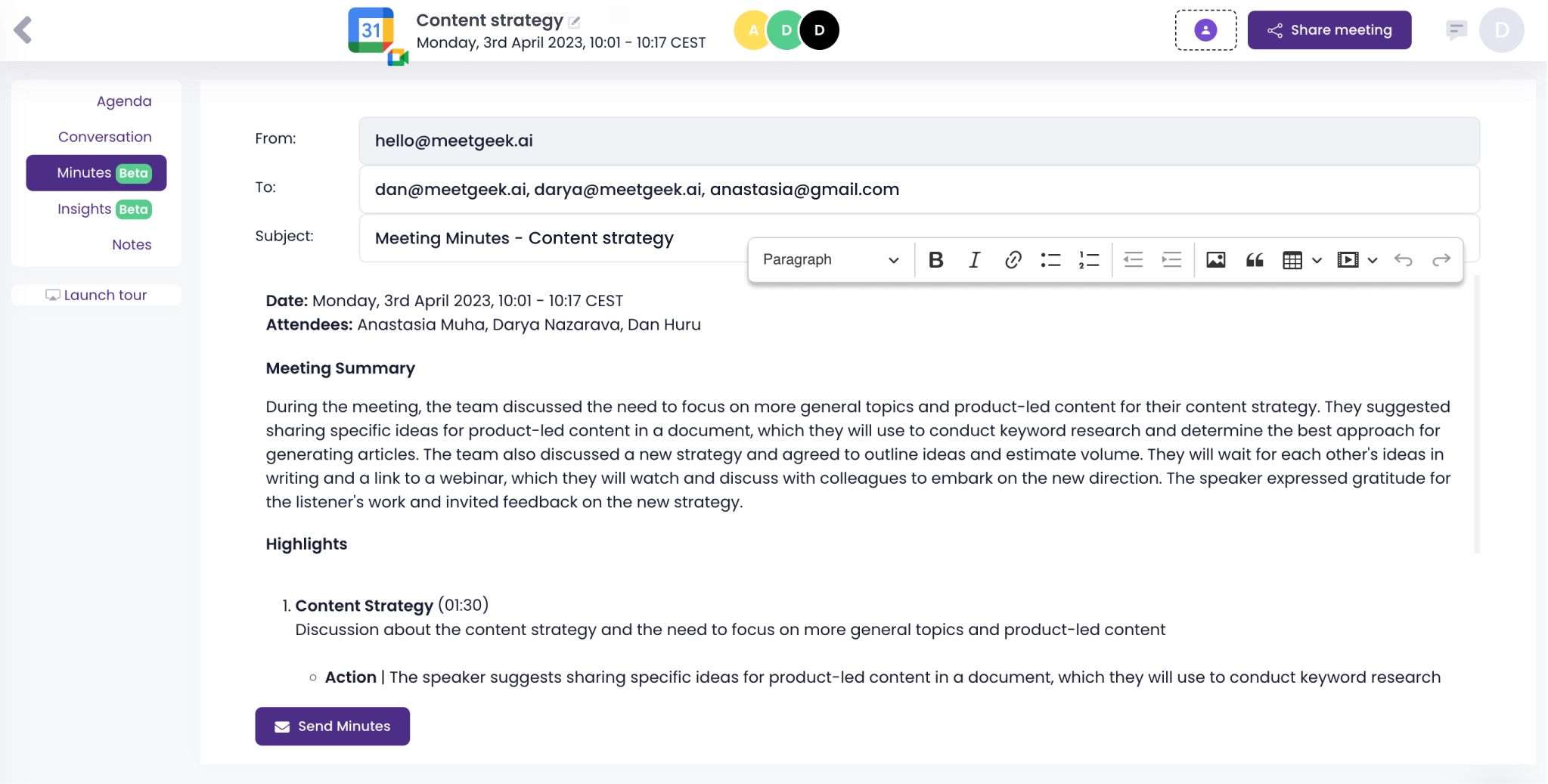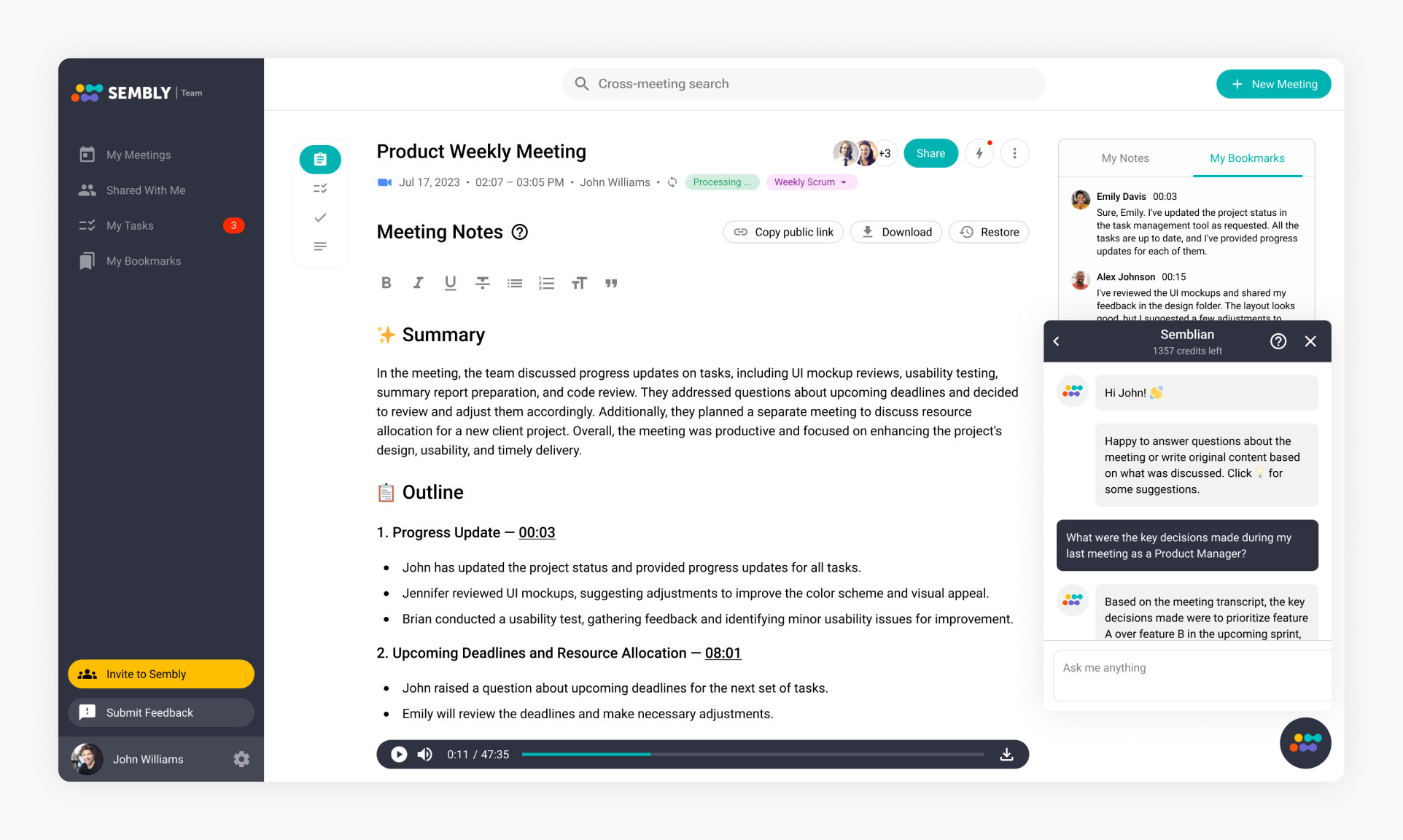Learning how to run a board meeting can be challenging, especially if you don’t follow a board meeting minutes template. To ensure you can prioritize engaging board members during your next meeting, we’ve taken the time to round up a comprehensive list of board meeting best practices and meeting productivity software that will help you kick it up a notch!
Understanding the Purpose of a Board Meeting
The purpose of a board meeting is multifaceted, serving as a critical forum for strategic decision-making, oversight, and governance within an organization. These meetings provide an opportunity for board members to review and discuss key aspects of the organization's operations, including financial performance, strategic direction, risk management, and compliance with legal and regulatory requirements.
Board meetings also offer a platform for board members to provide guidance and direction to executive leadership, offer insights based on their expertise and experience, and ensure that the organization is fulfilling its mission and responsibilities to stakeholders. Additionally, board meetings facilitate transparency and accountability by allowing stakeholders, such as shareholders or members of the public, to observe the deliberations and actions of the board. Ultimately, the purpose of a board meeting is to collectively steer the organization towards its goals, safeguard its interests, and uphold its values while adhering to the highest standards of integrity and ethical conduct.
Key Elements of an Effective Board Meeting
There are 12 key elements or sections in every effective board meeting agenda including:
- Call to Order
- Approval of Minutes
- Meeting Agenda Review
- Reports
- Unfinished Business
- New Business
- Strategic Planning
- Governance Matters
- Legal and Compliance
- Announcements and Other Business
- Next Meeting Date
- Adjournment
Best Practices for Running a Board Meeting
Effective board meetings are essential for successful organizations. To facilitate effective board meetings, it's important to:
- Create a meeting agenda with Fellow
- Circulate reading materials prior to the meeting
- Schedule regular board meetings and provide notice
- Set clear start and end times for each board meeting
- Encourage attendance and punctuality amongst all meeting attendees
- Leverage video conferencing software and meeting productivity tools
- Summarize key decisions and action items at the end of each board meeting
Meeting Productivity Tools for your Board Meeting
1. Fellow
Fellow is the only all-in-one AI meeting transcription and management software for remote and hybrid teams, making it the superior meeting productivity tool for yielding actionable meeting outcomes. With Fellow, meeting facilitators can choose from over 500 pre-built templates including an entire gallery of board meeting templates, generate custom agendas with AI-generated headings and talking points, or create their own formats following guiding prompts based on best practices. During board meetings, you can remain fully present while your AI assistant is hard at work transcribing, recording, and summarizing the meeting content. Fellow’s AI meeting manager gives you accurate meeting transcriptions, key talking points, and summaries for every meeting.
You can even assign, visualize, and prioritize all your meeting to-dos in one place, making it great for executives and board members that attend a lot of meetings. At the end of each board meeting, you get a complete recap. This means you don’t have to worry about who’s in charge of taking and distributing notes. Instead, you can send them out immediately after your meeting without any manual action on your end. The best part? You can get started for FREE. Learn more about Fellow’s pricing plans!
.webp)
2. MeetGeek
MeetGeek is a comprehensive meeting productivity tool that automatically records, transcribes, and shares meeting summaries. With one simple integration, you can automatically record, transcribe, and share meeting summaries that include action items and highlights key points. With AI-powered meeting recaps, you get conversation summaries written in human-like language, a paragraph outlining meeting highlights, meeting transcripts with timestamps for easy navigation, and auto-tags for every action item, area of concern, or important detail. You can even save all your Zoom Teams, and Google Meet in a single, searchable location so you can get information from past meetings in a matter of seconds.
MeetGeek offers several plans that cater to everyone starting with a Free Plan and extending to a Pro Plan that is priced at $15/ month/ user.

3. Sembly
Sembly is an AI-powered meeting assistant that works with Zoom, Google Meet, and Microsoft Teams to record, transcribe, and generates smart meeting summaries with meeting minutes. With Sembly, you can turn your meeting into searchable records that live in one place, searching your meeting by keyword, key item, or attendee. Like other meeting productivity tools, Sembly will join your meetings automatically so you can generate, edit, and share meeting minutes with all meeting participants. You can even keep the momentum going after every meeting with Tasks, where Sembly automatically identifies Activities, Tasks, and Projects, clearly articulating and describing the work item, along with assigned by, assigned to, and deadline.
Sembly has plans that cater to everyone including a Beginner Plan that is free and a range of paid plans that start at $10/month and extend to $20/month.

Level up your next board meeting with Fellow
Every great board meeting starts with an effective board meeting agenda. Unlock the potential of templates in Fellow, the all-in-one meeting management platform for fewer, smarter meetings. Sign-up for FREE to use this template and Fellow’s 50+ integrations!
Q&A section
- What is the purpose of a board meeting?
The purpose of a board meeting is to gather an organization's board of directors to discuss company-wide issues including business strategy, the company trajectory, and new policies.
- How often are board meetings held?
The frequency of board meetings varies depending on your organization's bylaws, size, and industry. Typically, board members meet quarterly.
- What should be included in board meeting minutes?
The type of meeting, meeting location, a list of attendees, nonvoting participants, motions, and time of call should all be included in board meeting minutes.
The most accurate and secure AI meeting notetaker
Record, transcribe and summarize your meetings with Fellow, the only AI meeting assistant built with privacy and security in mind.
Get started with Fellow todayLearn more%20(1).webp)

.webp)


